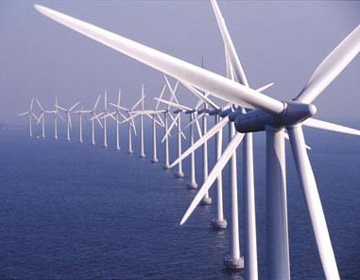
Wednesday marked the opening of the Netherland's first offshore wind farm, built by Shell and Nuon, a Dutch power utility. The 200 million euro project boasts a 108 megawatt farm on the North Sea, which will also be function as a research center to expand knowledge and observe how marine life is affected.
Going off land seems to be the only way that Holland's new coalition government can accomplish their (and the EU's) goal of 20 percent of their energy coming from renewable sources by 2020. In 2006, 2.37% of the Netherlands' total electricity came from wind power. Until recently, the licensing process for wind power projects took five years, and the government had prohibited building wind farms on the North Sea.
Offshore windfarms are good for several reasons. For one thing, the wind is much stronger at sea, and the open space allows for much larger turbines. The trend is more popular in Europe, where land area is limited and shallow water is abundant and accessible. The US generally has enough land space to accomodate windmills, although an offshore park is to be built off Cape Cod in the next two years. Much of America's coast is to deep for off-shore farms to be a practical solution, as production cost increases with a greater water depth and larger waves.
Offshore farms are said to be barely visible from land and designed in a place that won't interfere with shipping. Boston based energy consulting firm La Capra Associates predicts the Cape Wind project in Massachusetts to save the New England electricity market $25 million per year, and will decrease the region's harmful emissions. The system will lower demand for natural gas, which could lead to lower natural gas prices in the region.






